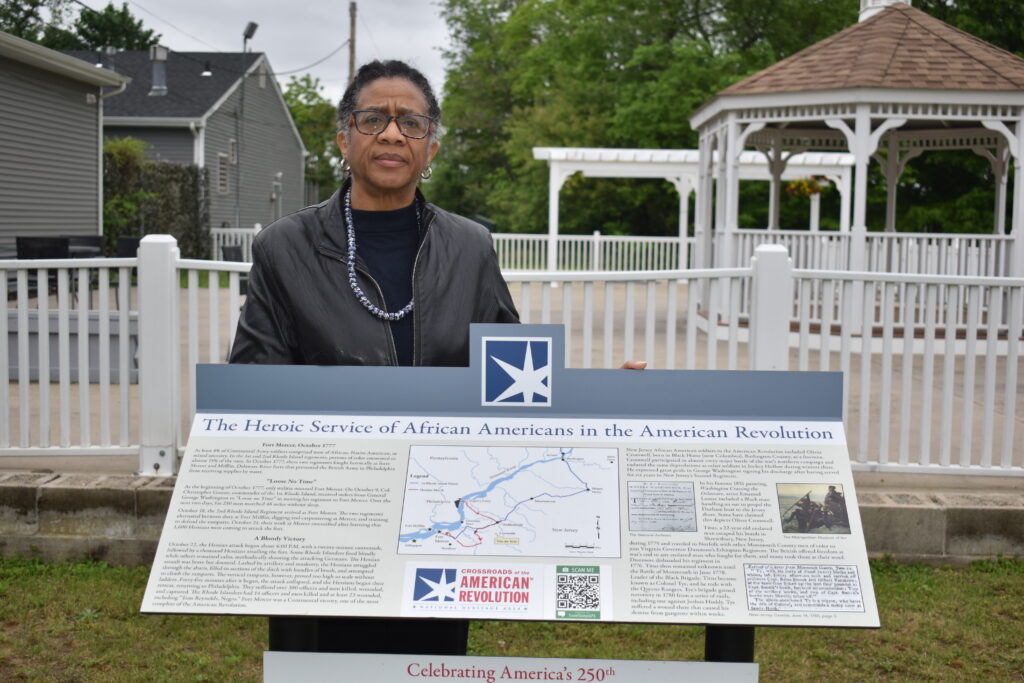
For young slaves trying to escape the South in the 18th and 19th centuries, the Underground Railroad was a salvation, in a country that was supposed to be a place where “all men are created equal.”
But in their hearts, those slaves knew they were human beings with the right to “life, liberty and the pursuit of happiness,” even if they had to risk life and limb on a dangerous journey. With help from Quaker abolitionists in Haddonfield, Moorestown and Cinnaminson – as well as other Black enclaves in South Jersey – many of them were able to breathe the fresh air of freedom.
“Peter Mott was an agent of the Underground Railroad,” said Linda Shockley, president of the Lawnside Historical Society, which oversees the Peter Mott House and Museum. “He took people in his wagon when they were escaping.”
Mott built his home in Lawnside (then called Snow Hill) in 1845 and his large farm stretched to the White Horse Pike, Shockley explained, adding that Mott would take the escapees to Quaker safe houses in Haddonfield and possibly hide them out somewhere on his property before they continued their journey north.
Although few historical records exist of the Underground Railroad’s clandestine nature, Shockley noted that it started in the 1700s and continued through the Civil War. The South Jersey route started in the African American communities of Springtown and Othello in Cumberland County that were founded shortly after the Revolutionary War.
From there, passengers would travel north through Gloucester County, finding shelter in other Black enclaves.
“Swedesboro was definitely a station on the Underground Railroad,” Shockley pointed out.
“Mount Zion AME Church in Swedesboro was built in 1799 and added to the National Register of Historic Places in 2001,” said Gloucester County Commissioner Jim Jefferson in an article he wrote for Black History Month this year.
“It played an important role in the Underground Railroad in South Jersey, and still has a trap door where the congregation would hide runaway slaves.”
The church cemetery contains the remains of some fugitives and African American Civil War vets. The burial ground was estimated to be active from the 1830s to the 1930s and may contain up to 200 unmarked graves, wrote Jefferson, adding that “13 Black soldiers from the Civil War are buried at the site.”
Many of the escaped slaves who made it to Philadelphia were then transported by boat along the Delaware River and Rancocas Creek, using tunnels to get to safe houses in Palmyra and Riverton before going on to Burlington City and Bordentown. Others settled in the Black enclaves of West Palmyra, East Riverton (in Cinnaminson Township) and Timbuctoo off of the Rancocas Creek.
According to its historical society, “Burlington County has been called the Cradle of Emancipation. No New Jersey county has a richer Black historical presence than Burlington County. No less than 16 sites in nine municipalities – many directly related to the Underground Railroad movement – have been identified to demonstrate three centuries of transformation of the Black community of Burlington County.”
Shockley organized a virtual panel on May 9 to explore the area’s historic Black enclaves; it drew more than 50 people.
Panelists included Morgan Lloyd of 1838 Black Metropolis; Ralph E. Hunter Sr., founder of the African American Heritage Museum of Southern New Jersey; Paul Schopp of Stockton University; Guy Weston of the Timbuctoo Historical Society; C. Adrienne Rhodes of the Preserving Black Haddonfield Project; and Dr. Keith Green of Rutgers-Camden.
Rhodes is a leader of The Preserving Black Haddonfield Project and a co-founder and executive editor/producer of “Preserve: Narratives from Historic Haddonfield’s African American Community,” according to Shockley. She is a great-great-granddaughter of John Henry Lawson, Civil War Medal of Honor winner, descendant of Lawnside’s Arthur family and fourth-generation Haddonfield native.
Earlier this month, the Camden County Board of Commissioners joined the Lawnside Historical Society and that town’s mayor, Mary Ann Wardlow, to unveil a historic marker honoring African American Revolutionary War soldiers, including the Rhode Island Regiment that defeated the Hessians in the Battle of Red Bank at Fort Mercer along the Delaware River in National Park.
“The historical society’s goal is to help people understand the history of this town,” said Shockley, adding that members are learning more all the time, thanks to historical research by Shamele Jordon.
The society will sponsor its third annual Underground Railroad Summer Camp for sixth to eighth grade students from Monday, June 24, to Friday, June 28, at the Grace Temple Baptist Church, 15 E. Charleston Ave. in Lawnside.
Along with a focus on the Peter Mott House Underground Railroad Museum, campers will see other sites and learn about the lives of those who sought freedom through visual, performing and folk arts. They will also learn Lawnside’s unique history of being the first Black town incorporated in the northeast, according to Shockley.
The camp is made possible by funding from the Camden County Cultural and Heritage Commission, a partner of the New Jersey State Council on the Arts. The deadline to register is June 8.
Visit www.petermotthouse.org/blog/.









